Your Guide to Disposable Plates, Cups, and Cutlery

What’s the difference between renewable and recyclable? Are all biodegradable plates compostable, or are all recycled cups also recyclable? Are my purchases even making a difference to the environment?
Let’s be honest—there’s a lot of labels and terms we’re asked to memorize in the world of environmentalism. Nearly 80% of us want to make smart, sustainable purchases, but with such a steep learning curve, manufacturers don’t always make this easy for us.
In this article, we’ll work through these terms as they relate to disposable plates, cups, forks, knives—anything and everything that’s single-use and makes its way onto your tabletop.
What Makes an Item Disposable?
Put simply, a disposable item is meant as a single-use, one-and-done product. The restaurant and food worlds use this term to designate an item as the opposite of reusable—an item meant to be cleaned and used again for the next customer to your kitchen.
The US paper cups and plates market, just one of the many material types the food world classifies as disposable, hit $21.68 billion in 2023, showing that there is a lot of us buying a lot of disposables—exactly why it’s so important to know what you’re buying.
The cost of a disposable item is completely tied to material type, and investing in a certain material only to find later that it isn’t recyclable, recycled, renewable, compostable, or biodegradable can have a big impact on your bank account and an even bigger impact on the planet.
Before you stock up for your next event, let’s explore these labels and material types.
Recyclable

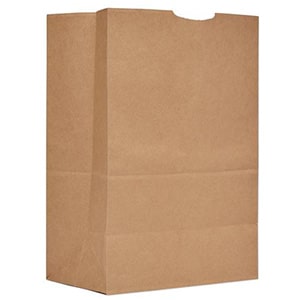
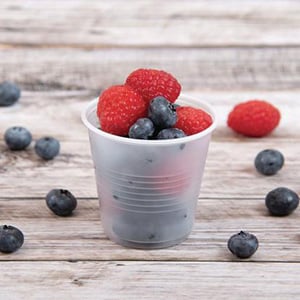
Sometimes used as a catch-all term for anything that doesn’t go to a landfill after disposal, recyclable products are the easiest to identify—just look for the familiar symbol underneath the product. The numbers inside the recyclable symbol indicate the type of plastic used in the product, so be sure to check that your local recycling program will accept that plastic number before putting it in your bin.
Recyclable materials are everywhere in the food world, making it completely possible to purchase recyclable products for all your disposable needs.
Here you’ll find natural paper products like brown paper grocery bags and plastic-reinforced paper products like poly-coated coffee cups. Many plastic cups and plastic cup lids are recyclable, as are aluminum cans or Ball Aluminum Cups©.
Recycled



A recycled product is the typical sequel to a recyclable product’s story: it was used before and currently enjoying a second life as that recycled plate or cup in your hand.
It’s easy to see how hardier materials like plastics and metals can dominate the recycled products world, but paper and plant-based products can also be recycled and reused again.
There’s a seemingly endless amount of plastic types that can make their way to your tabletop, but luckily we can quickly spot a common recycled one: the “rPET” (Recycled Polyethylene Terephthalate) label proves this plastic is recycled and eco-friendly. Cups and lids are commonly made from recycled plastics, as is cutlery.
Metal and paper products are the other major materials in the recycled world: some aluminum foils are made of recycled aluminum, and many paper plates and napkins that were recycled can also be compostable once you’re finished with it.
Renewable

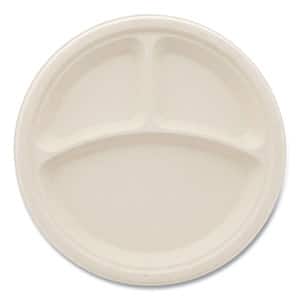

Renewable product labels are among the most open-ended and generously applied labels in the disposables industry. You’ll find it on just about any biological-based material these days, but at its core, the fundamental term still holds meaning.
Traditionally, renewable products are those that are sourced sustainably: many paper products are not commonly labeled renewable because they are made from hardwoods that take a long time to grow and can contribute to deforestation. In contrast, bamboo products are often renewable because bamboo, a member of the larger grass family, grows so quickly.
You’ll find the renewable dinnerware category dominated by these plant-based products that are easily grown and harvested. This includes bagasse products, which are made from sugarcane, such as takeout clamshells, plates, and the NoTree™ line of cups and bowls.
Plant-based plastics, which were actually the first type of plastic ever invented, have made a resurgence in the modern marketplace in large part because of their renewable (and compostable) properties. It’s a wide world unto itself—from PLA (Polylactic Acid), to cPLA (Crystalized PLA), and tPLA (Talc-Injected PLA)—so be sure to check out our plant-based plastics offerings from Vegware™ and World Centric for more information.
You’ll find many product materials, like some Plastarch Material (PSM), that are partly renewable. Made from cornstarch or cassava, manufacturers can mix this compostable material with plastics, rendering the product only partially renewable or biodegradable.
Compostable



Compostable materials are the lifeblood of agriculture. As organic materials break down, they release stored nutrients which can be used as a fertilizer for soil, creating healthier crops—it’s a cycle that the planet has done on its own since the beginning of time.
Unlike biodegradables that are meant to breakdown over time in public landfills, compostable products are sent to special facilities that ultimately redistribute the compost for public use.
While some compostable items can be used for home compost piles, many require higher temperatures before breakdown can occur. These products must be sent to larger commercial compost facilities—be sure to check the product specs before purchase to be clear on which option works best for you. All Eleven36-labelled Compostable products are industrial disposable.
Compostable dinnerware and tableware are once again categories that best fit plant-based construction materials. This includes sugarcane plates and bowls, along with plant-based plastic cutlery, bamboo chopsticks, and paper napkins.
Biodegradable

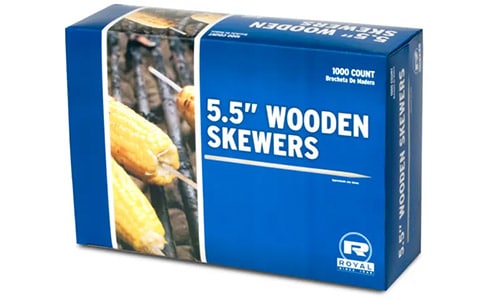
While all compostable products are biodegradable by definition, the inverse is not true: not all biodegradable products are compostable.
The difference between the two comes down to nutrients: compostable products release humus (no, not hummus) which is organic matter used to supercharge our soil. Biodegradable materials, however, simply break down over time, not always leaving behind much of anything.
A good way to find out if a product is biodegradable or compostable is asking whether or not the product was treated, finished, or mixed with any other materials along the way.
Examples of non-compostable biodegradable products include wooden skewers that have been pressure-treated for increased sturdiness, and plant-based products such as agave straws that use degradable plastic to help reinforce the plant fibers, keeping it from falling apart while in use.
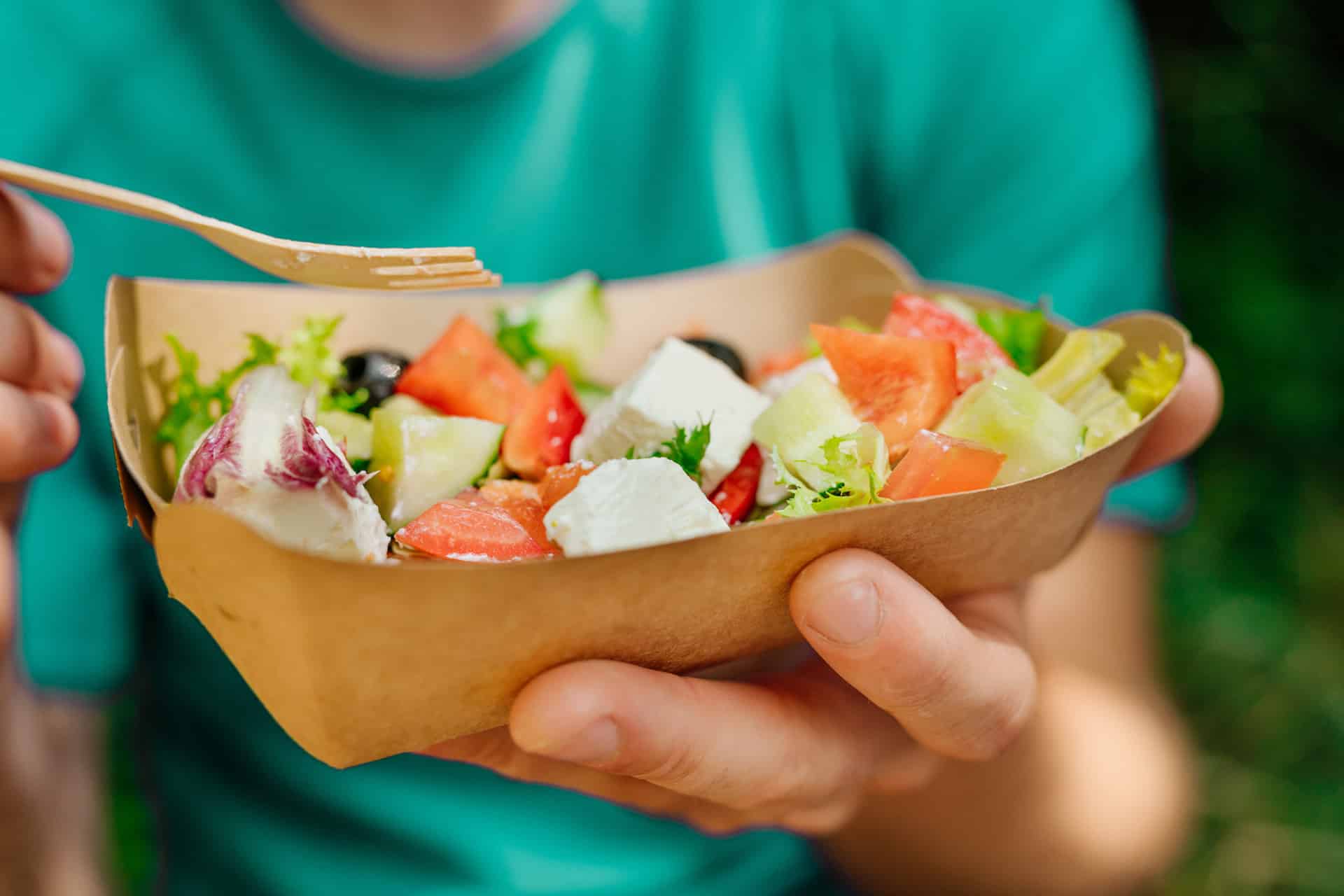
All the Rest
Just as not all biodegradable products are compostable, and not all recycled products are recyclable, there is no universal constant for any disposable product material and its eco-friendly status.
Plenty of paper and wood products, traditionally biodegradable and compostable, are treated with plastics that categorize them as trash-only disposables. Similarly, products made of thicker metal like aluminum cans may be recyclable, but thinner metal sheets like aluminum foil are only disposable via the garbage can.
Eleven36 strives to make all disposable label tags clear and easy to understand, but if you’re still curious to learn more about the environmental impact and sustainability of a product before making your purchase, feel free to reach out—we’re always here to help!









